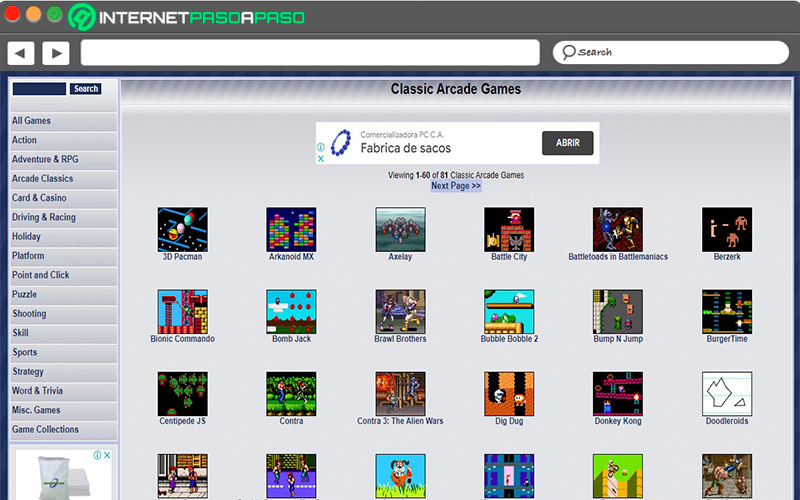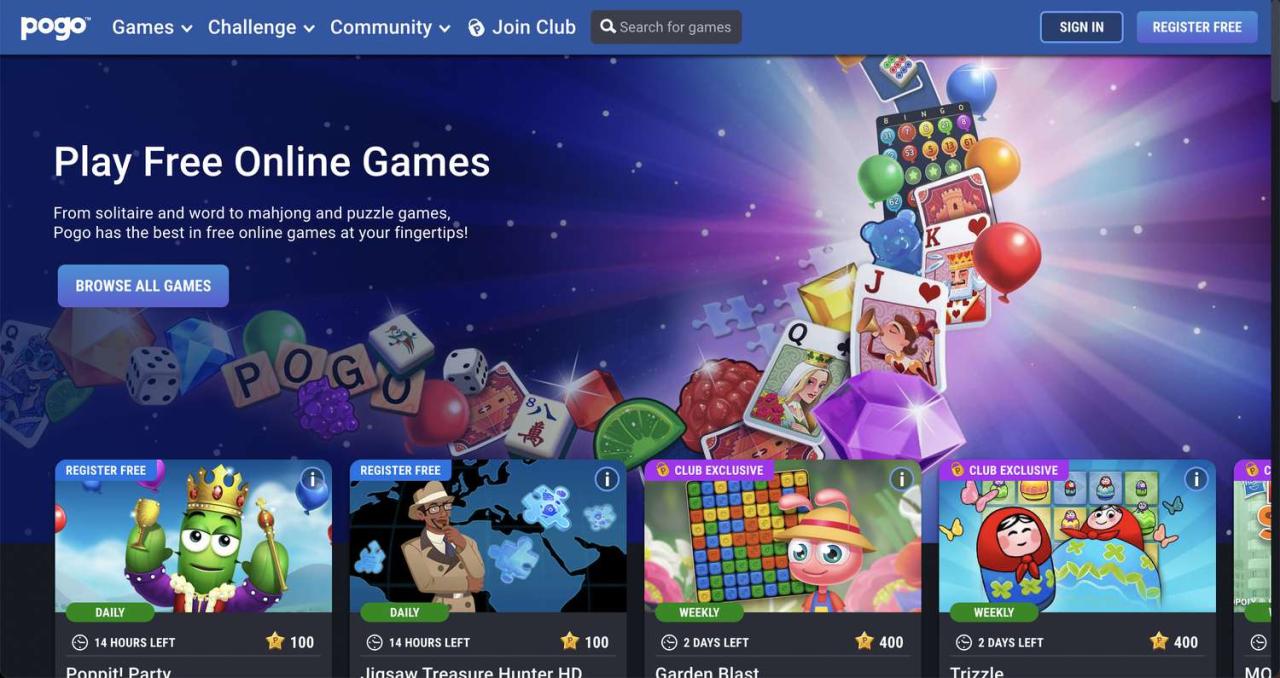Web games take center stage in the digital entertainment landscape, captivating players with their diverse genres and engaging gameplay. From puzzle solvers to action-packed adventures, these games have evolved dramatically over time, reflecting both technological advancements and changing player preferences. Today, web games can be enjoyed on various platforms, including browsers and mobile devices, making them accessible to a broad audience.
As we delve into the world of web games, we will explore their development process, the technologies behind them, and the impact they have on our society. This journey will uncover how these games not only entertain but also foster community, promote teamwork, and offer educational opportunities.
Overview of Web Games

Web games are digital games that can be played directly in a web browser without the need for downloading additional software. Their evolution began in the early days of the internet, with simple text-based games that gradually transformed into sophisticated multimedia experiences. Over time, technological advancements such as faster internet connections, improved browser capabilities, and the rise of HTML5 have significantly enhanced the quality and complexity of web games, allowing them to attract a broader audience.
The most popular genres of web games showcase a wide range of gameplay experiences, each with its unique characteristics. The diversity in genres appeals to various player preferences and ensures that there’s something for everyone. The following are some of the leading genres:
Popular Genres of Web Games
Understanding the different genres of web games is essential for grasping the variety of experiences they offer. Here are some prevalent genres along with their defining traits:
- Action Games: Fast-paced and often requiring quick reflexes, action games include platformers, shooters, and fighting games. They usually feature intense gameplay, engaging levels, and dynamic challenges.
- Puzzle Games: These games focus on problem-solving and critical thinking. Players must think strategically to solve challenges or complete levels, often featuring a range of mechanics from match-three to logic puzzles.
- Adventure Games: Blending narratives with exploratory gameplay, adventure games often involve quests, character development, and puzzle-solving elements, immersing players in rich storylines.
- Simulation Games: Simulations mimic real-life activities, allowing players to manage resources or control environments. These games often reflect real-world scenarios, from farming simulations to city-building experiences.
- Role-Playing Games (RPGs): RPGs emphasize character development and story progression, allowing players to embark on quests, level up their characters, and interact with immersive worlds.
Platforms for Playing Web Games
Web games are primarily played on various platforms, each offering distinct advantages and accessibility features. The primary platforms include:
- Browsers: The most common platform, web games are accessible through browsers like Chrome, Firefox, and Safari. This allows players to enjoy games on any device with internet access without needing installation.
- Mobile Devices: With the rise of smartphones and tablets, mobile web games have gained immense popularity. Many games are optimized for touch controls and can be played on-the-go, enhancing player access.
- Social Media: Social networking sites often host web games, leveraging social elements to engage users. Games on platforms like Facebook integrate friend interactions and competitions, creating a community-driven experience.
In summary, web games have transformed from simple text-based formats into complex and engaging experiences across multiple genres and platforms, appealing to a vast audience and continually evolving with technology.
Development and Design of Web Games

Creating web games involves a blend of creativity and technical expertise. Developers must navigate a variety of technologies and programming languages to bring their game ideas to life. The design process is equally crucial, as it encompasses engaging gameplay mechanics and intuitive user interfaces to ensure players are captivated and immersed in the game world.
Technologies and Programming Languages
The foundation of web game development lies in a combination of languages and technologies that work together to create an engaging experience. The primary languages used include:
- HTML5: This markup language is essential for structuring web content and is widely used for creating the canvas element where graphics are rendered.
- CSS3: Cascading Style Sheets enhance the appearance of web games, allowing for styling of layouts, animations, and visual elements.
- JavaScript: A versatile language that enables dynamic interactions, game logic, and real-time updates within the game environment.
- WebGL: This JavaScript API allows developers to render 2D and 3D graphics within the browser, providing high-performance graphical capabilities.
The combination of these technologies allows for the creation of rich, interactive experiences directly within web browsers, making games accessible to a wide audience without the need for additional plugins.
Designing Engaging Gameplay Mechanics and User Interfaces
In web game development, the design of gameplay mechanics and user interfaces is key to player retention and enjoyment. Engaging gameplay mechanics keep players invested in the game, while a well-designed user interface ensures that they can navigate and interact with the game seamlessly.
Important aspects to consider in gameplay design include:
- Clear Objectives: Players should understand what they need to achieve within the game, whether it’s completing levels, solving puzzles, or competing against others.
- Balanced Difficulty: A well-paced difficulty curve maintains player interest, gradually challenging their skills without causing frustration.
- Reward Systems: Implementing rewards for achievements, such as points, collectibles, or unlockable content, fosters player motivation and engagement.
- Intuitive Controls: Ensuring that controls are easy to use and responsive enhances the overall user experience.
The user interface should be visually appealing and logically organized. Key considerations include:
- Accessibility: Design should accommodate players of varying skill levels, including those with disabilities, by providing options like adjustable text size and color contrast.
- Feedback Mechanisms: Visual and audio feedback for actions enhances immersion and helps players understand the impact of their decisions.
- Consistent Layout: A cohesive design across menus, in-game displays, and settings ensures players can easily navigate without confusion.
Comparison of Popular Game Engines
Choosing the right game engine can greatly influence the development process and the final product. Various game engines cater specifically to web game development, each with its unique features and capabilities. Here’s a comparison of some popular options:
| Game Engine | Key Features | Best For |
|---|---|---|
| Unity | Cross-platform capabilities, extensive asset store, strong community support | 2D and 3D games with complex graphics |
| Construct | Drag-and-drop interface, no coding required, quick prototyping | 2D games for beginners and rapid development |
| Phaser | Open-source, robust framework for 2D games, WebGL support | 2D games with HTML5 and JavaScript |
| PlayCanvas | WebGL support, real-time collaboration tools, cloud-based | 3D games and applications in a browser |
Each engine offers distinct advantages, catering to different levels of expertise and project requirements. The choice of engine significantly impacts the workflow and final experience delivered to players.
Impact of Web Games on Society

Web games have become a significant part of modern culture, influencing various aspects of society. They serve not only as a source of entertainment but also as tools for social interaction, education, and personal development. This section explores the multifaceted impact of web games, focusing on their social benefits, potential negative effects, and their applications in education and skill development.
Social Benefits of Playing Web Games
Web games foster community building and teamwork through shared experiences and collaborative gameplay. Players often connect with others who share similar interests, creating friendships and networks that can extend beyond the game itself. The social dynamics within these games encourage players to communicate and strategize together, enhancing teamwork skills.
For example, multiplayer online games like “World of Warcraft” and “Fortnite” require players to work in teams to achieve common goals, promoting cooperation and collective problem-solving. These interactions can lead to a sense of belonging and community, where players feel valued and connected.
“Players who engage in web games often develop valuable interpersonal skills that translate into real-world interactions.”
Potential Negative Effects of Excessive Gaming
While web games offer numerous benefits, excessive gaming can lead to negative consequences, such as social isolation, addiction, and decreased physical health. Awareness of these potential issues is essential for players to maintain a balanced lifestyle.
To mitigate these negative effects, a variety of strategies can be employed:
- Setting time limits for gaming sessions to encourage moderation and prevent excessive play.
- Encouraging breaks during gaming to promote physical activity and reduce screen fatigue.
- Participating in games that require physical movement, like augmented reality games, to ensure a healthier gaming experience.
These strategies help players enjoy the benefits of gaming while minimizing the risks associated with it.
Educational Purposes and Skill Development
Web games can also serve as effective educational tools, enhancing learning experiences and skill development. Many games incorporate elements that require critical thinking, problem-solving, and creativity, making them useful for educational purposes.
For instance, games like “Minecraft” and “Kerbal Space Program” teach players about architecture, engineering, and physics through engaging gameplay. These games encourage players to experiment and learn through trial and error, which can facilitate deeper understanding of complex concepts.
Additionally, educational web games often include features that track progress and provide feedback, allowing players to learn at their own pace. This adaptive learning approach can be particularly beneficial in a classroom setting, where diverse learning styles exist.
“The integration of gaming in education can lead to increased motivation and engagement, bridging the gap between traditional learning and modern technological advancements.”


